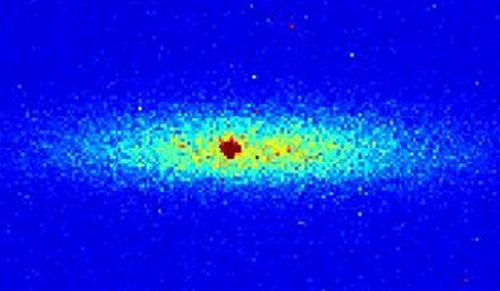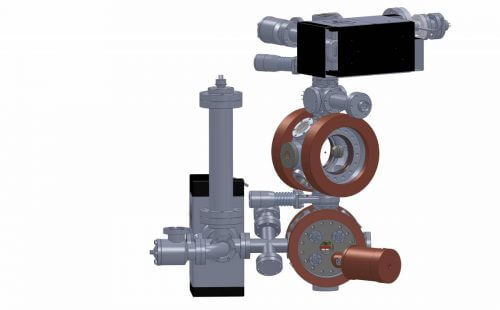The scientists of the Weizmann Institute cooled a single ion and a great many atoms to a temperature of about a million degrees above absolute zero - and put them in the same trap. To their surprise, they found that the ion had begun to heat up. Later, the scientists understood the reasons for this, which also determine the maximum degree of cooling to which it is possible to bring a mixture of a single ion with very many atoms.

At low temperatures, extreme phenomena occur: electricity flows without resistance, liquids flow without friction, and new states of aggregation appear. The behavior of atoms in these states is dominated by quantum physics, and the coldest temperatures that scientists have been able to reach, less than a million degrees Celsius above absolute zero, were created in a collection of laser-cooled atoms (the laser beams gradually dampen the vibrations of the atoms, thus cooling them) and trapped. Two different types of laser-cooled atoms were cooled to such extreme temperatures. In the first type, neutral atoms, "clouds" containing hundreds of thousands of atoms were condensed, creating new states of aggregation. As for the second type, ions (atoms with an electric charge), here a small number of ions cool inside traps, which taught that they can be used as precise atomic clocks, as well as a basis for quantum computers.
At the Weizmann Institute of Science, in the group of Prof. Roy Ozeri from the Department of Physics of Complex Systems, previously managed to cool a small number of ions to a temperature of a million degrees Kelvin above absolute zero. In other experiments, they managed to cool "clouds" of hundreds of thousands of atoms to these temperatures.
But how much can a mixture of atoms and ions be cooled together so that they can be in the same trap? Will new quantum phenomena be discovered using this new "cocktail"? This is the question that Prof. Ozari, faculty scientists Dr. Nitzan Akerman, Dr. Yoni Dalal and Dr. Ziv Meir, and research students Thomas Sikorsky, Ruthi Ben-Shlomi, sought to solve. Using lasers, they cooled about 100,000 atoms to a temperature of one million degrees. At the same time they cooled a single atomic ion and trapped to the same temperature. At this temperature, the ion is in the lowest energy state in which quantum theory allows it to be (the ground state of the trap), and in this state, all of the ion's energy comes from small fluctuations required by the Heisenberg uncertainty principle.

The atoms and ions were cooled using different methods (the atoms were cooled using laser beams, and the ion - using electric fields), and in different vacuum chambers, which are 25 centimeters apart. At this stage, the scientists moved the "cloud of atoms" using a "conveyor belt" made of laser beams into the vacuum chamber where the cooled ion was - and checked how its energy changes over time. Since the atoms are very cold, the researchers expected the ion to remain in the ground state of the trap. But to their surprise, when they measured the ion, it became clear to them that instead of cooling, it began to heat up. Given the gap between the prediction and the measurement findings, they began to look for the cause of this phenomenon.
Thus it turned out that the ion - which is constantly moving as a result of the electric fields that trap it - repeatedly collided with the atoms, which caused it to heat up. What's more: it turned out that the energy distribution of the ion after the collisions with the atoms is unusual, and at times the ion heated up and reached energies 1,000 times higher than its own temperature. These results show the maximum degree of cooling to which such a mixture of a single ion with very many atoms can be brought. "In this way, we were able to understand the mechanism that determines the cooling limit," says Prof. Ozari. "We used mathematical tools that now allow us, and other scientists in the world, to examine similar processes in different systems."
In fact, these mathematical tools, which describe distributions that include extreme events, may be used, among other things, for applications that the founders of quantum theory did not think of; For example, calculation and forecasting of fluctuations in the prices of stocks and bonds in stock exchanges, and more.
#Science_Numbers
As part of the ion heating in the study, it reached energies 1,000 times higher than its own temperature.

One response
What is the connection between what is described in the article and the last paragraph and the capital market?